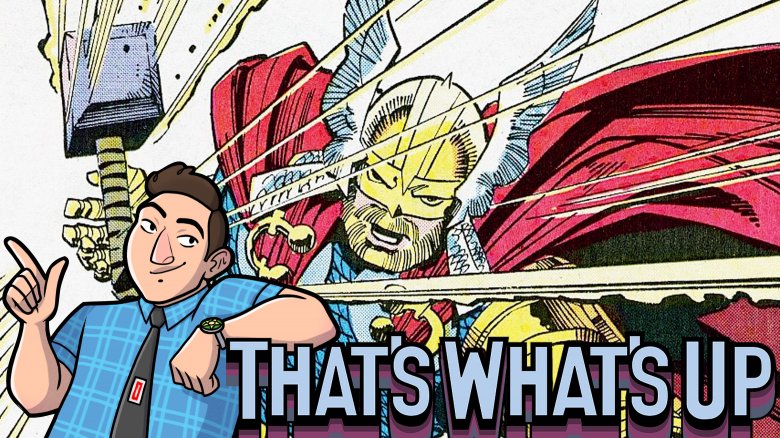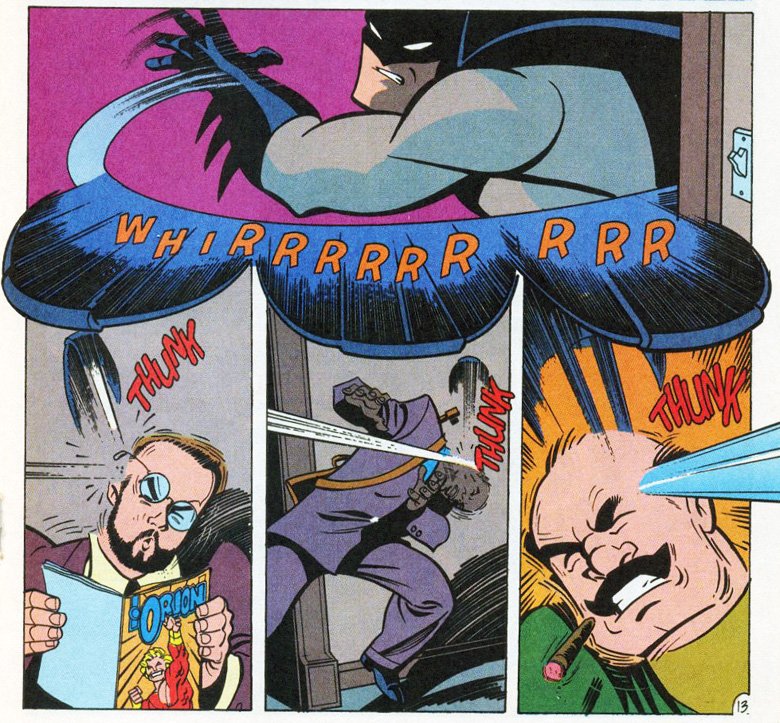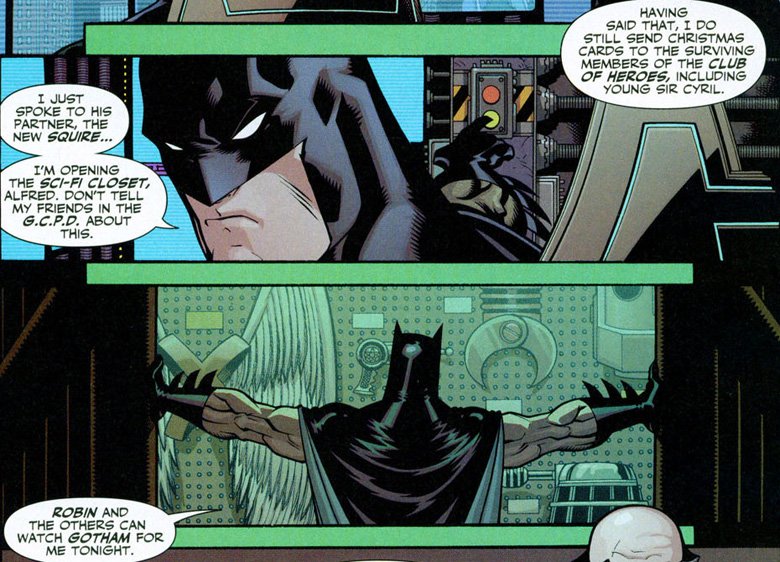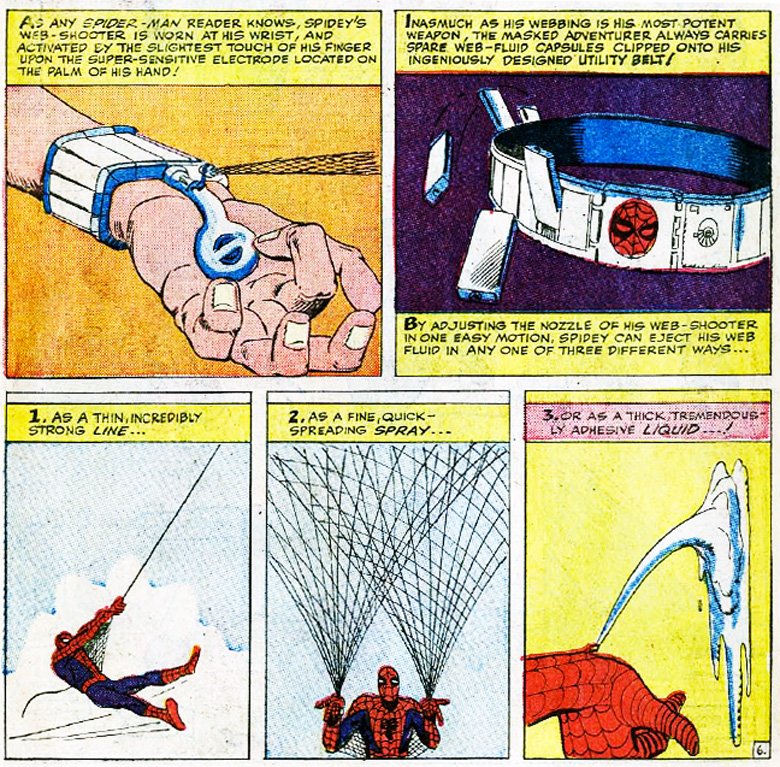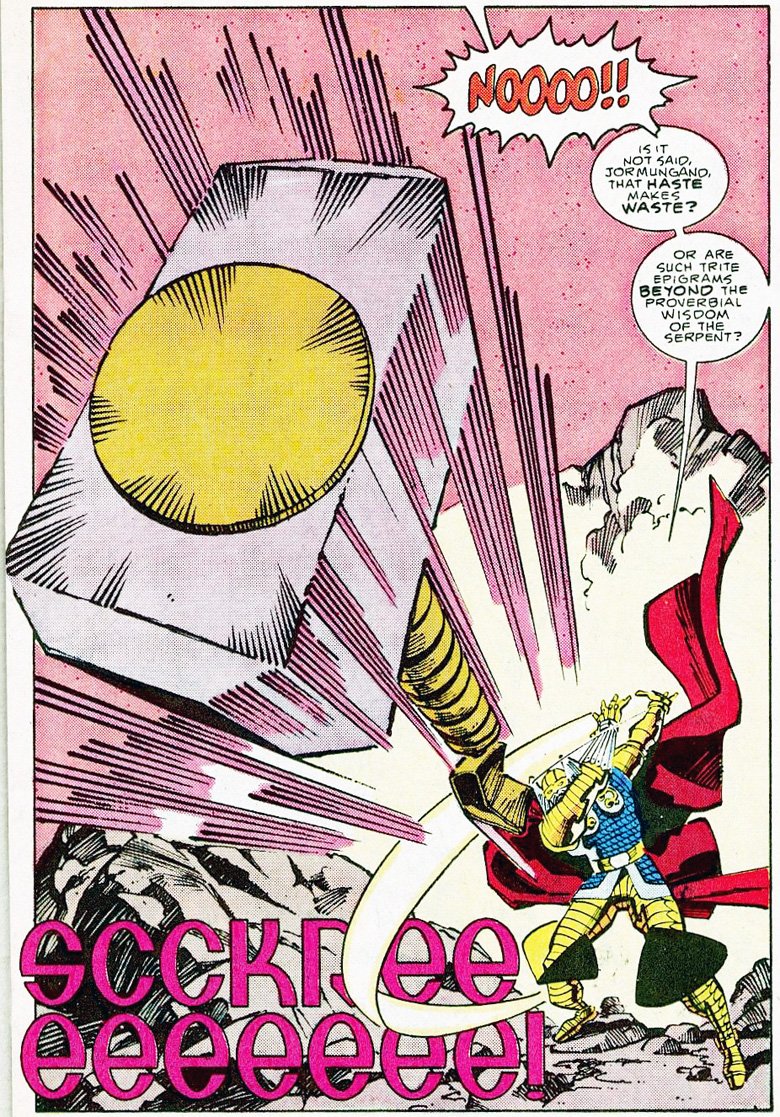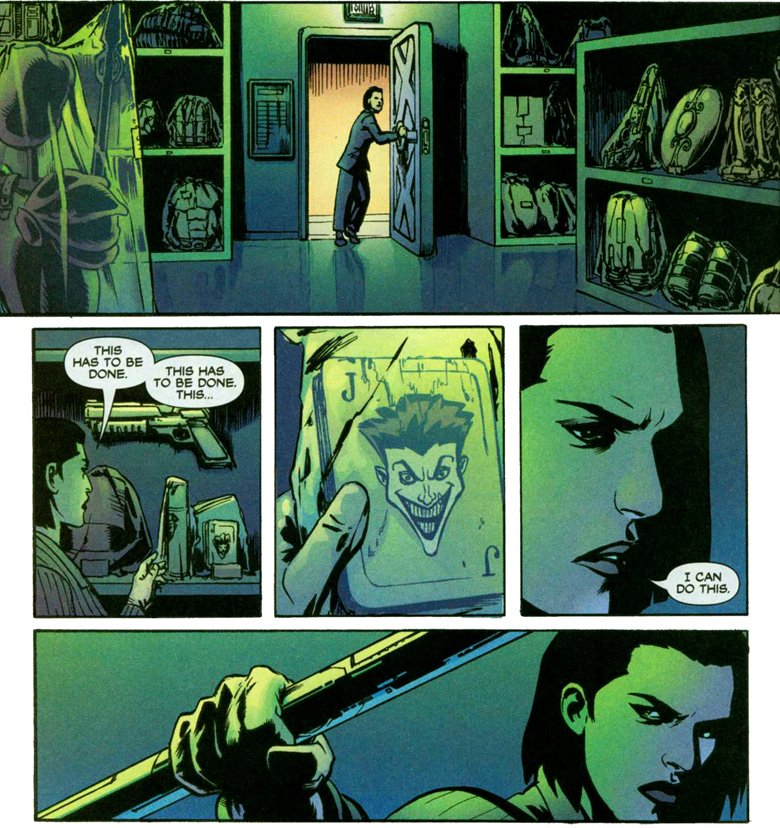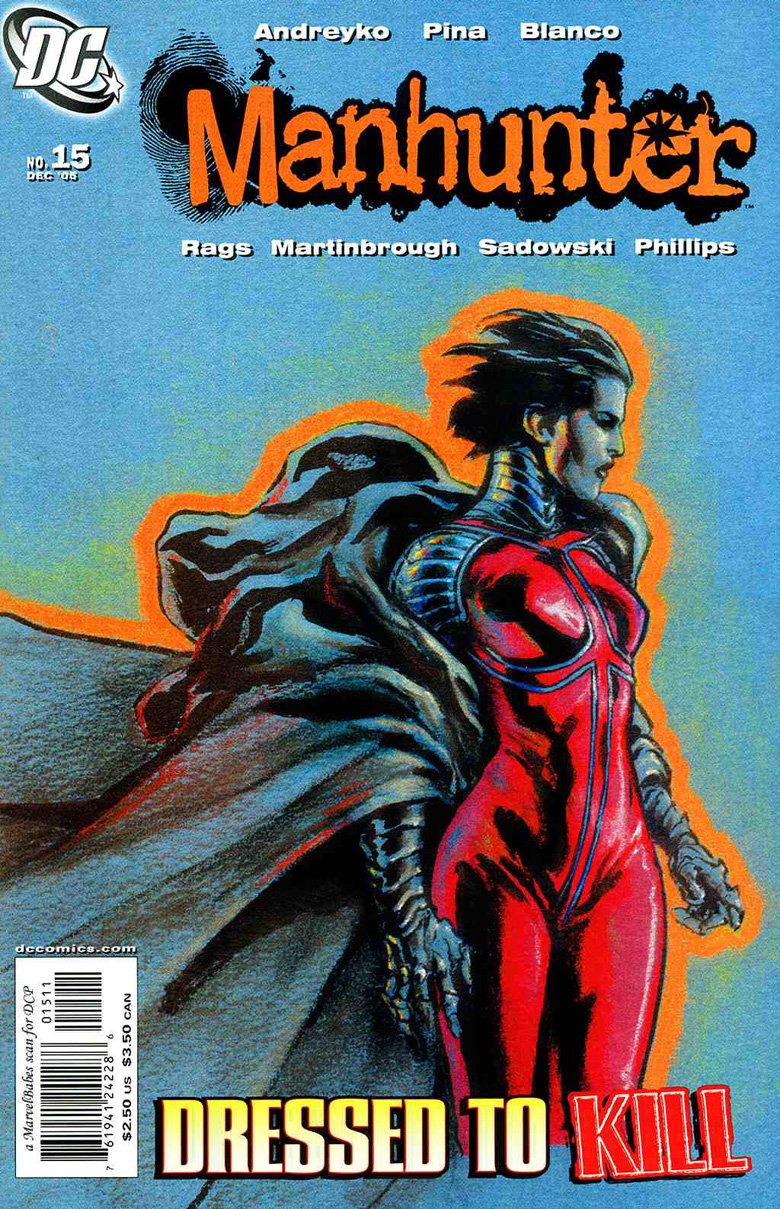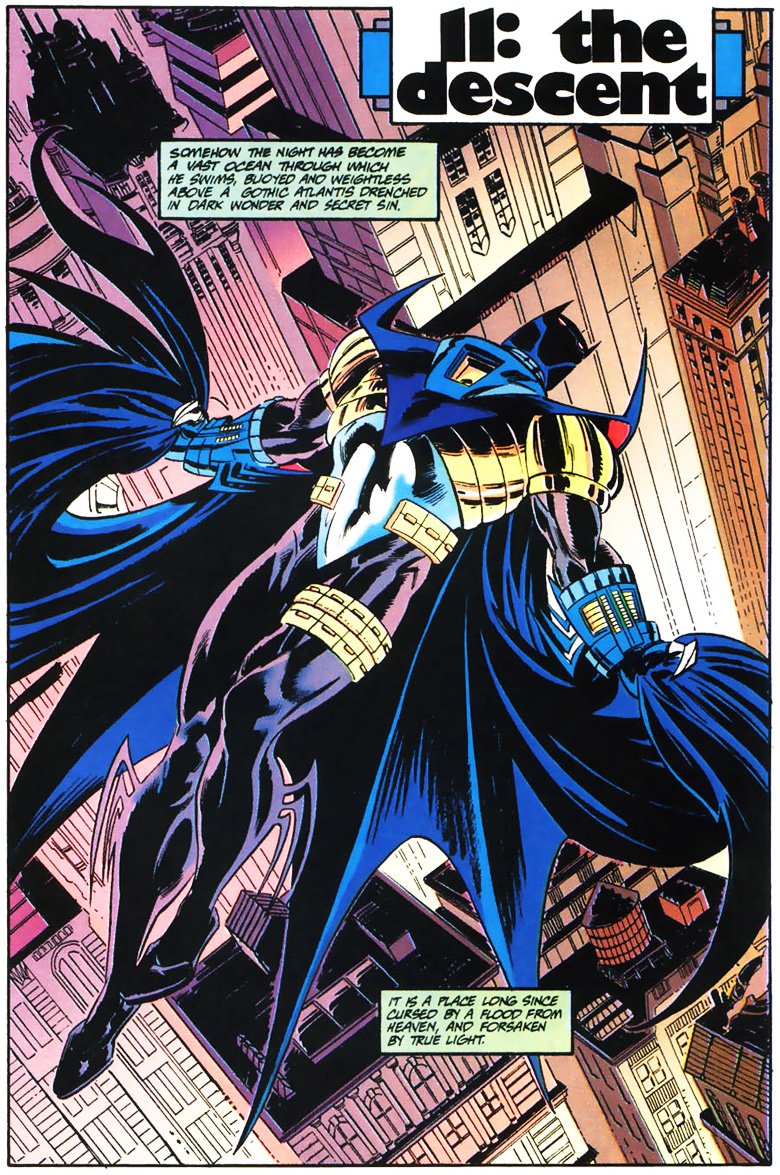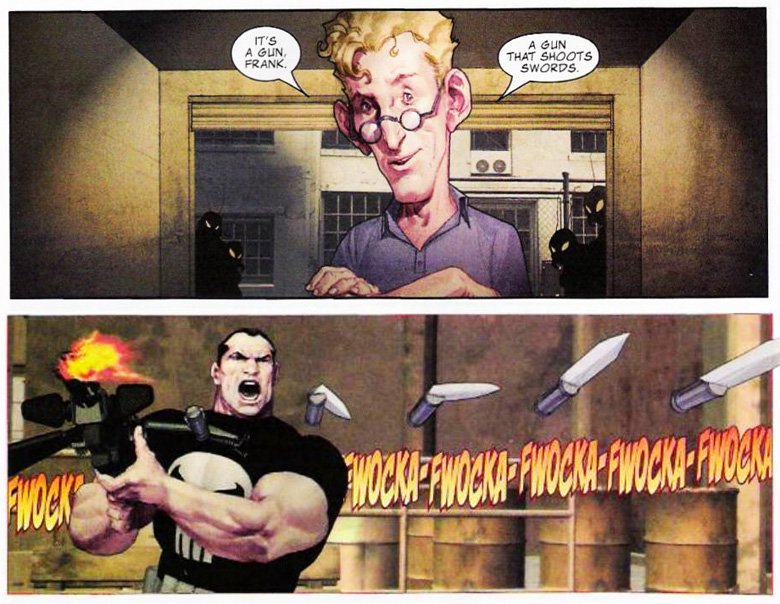That's What's Up: The Coolest Superhero Weapon
Each week, comic book writer Chris Sims answers the burning questions you have about the world of comics and pop culture: what's up with that? If you'd like to ask Chris a question, please send it to @theisb on Twitter with the hashtag #WhatsUpChris, or email it to staff@looper.com with the subject line "That's What's Up."
Q: What's the coolest superhero weapon? — @kingofdoma
Given my status as the World's Foremost Batmanologist, you might think my answer to this question would be easy to guess, and that it would almost certainly involve pointy ears and a matte black finish. The truth is, though, the grand arsenal of superheroic weaponry goes well beyond Batarangs, to the point where actually figuring out which one is the best depends almost entirely on context. Do you want the raw power of a Green Lantern ring, limited only by your willpower and imagination? The nebulous, ill-defined threat of the Ultimate Nullifier, which can cower even Galactus?
And really, what even counts as a weapon? Are Wolverine's claws a weapon when they're actually a part of his body? Iron Man's armor is definitely more of a weapon than a vehicle, but what about the Batmobile? Or the S.H.I.E.L.D. Helicarrier? There are a lot of questions. Fortunately for me, I'm the one who gets to decide how to answer—and I think we all know where to start.
Batarangs
Of course, just because they're not the coolest superhero weapon doesn't mean Batarangs aren't pretty awesome in their own right. After all, if there's one thing we've learned about Batman over the past 75 years, it's that his greatest strength in the war against crime isn't his endless determination or the years he's spent preparing for every possibility. It's his commitment to branding.
When that bat crashes through his window and he realizes that dressing up as a bat will help him to terrify criminals, he builds his entire life around that idea. His car is shaped like a bat, his computer is shaped like a bat—even his corporate headquarters is a skyscraper with pointy bat ears. If nothing else, you'd think that might be a little damaging to that whole secret identity thing, but like I said. He's committed to the brand, and Batarangs are the ultimate example.
Seriously, the fact that Batman's primary method of dealing with his opponents is to throw little versions of his own logo directly at their heads is great for a lot of reasons, but the best part might be that they're his calling card. This is a guy who wants his enemies to know exactly who he is, even if they only find out when they wake up with a concussion and a bat-shaped bruise on the next bus to Arkham Asylum. Even in a world as weird as the DC Universe, that's the kind of memory that's going to stick with you, and make you think twice the next time you're signing up to rob the Ancient Egyptian Cat Statue exhibit at a museum named for a pair of twins.
When it comes to Batman's weaponry, however, Batarangs are just the tip of the iceberg.
The Sci-Fi Closet
One of my favorite things about Batman's arsenal is the existence of the Batcave's Sci-Fi Closet. Introduced by Grant Morrison and Ed McGuinness in the pages of JLA Classified, it's the room where Batman keeps all the weird stuff he doesn't like to talk about: space lasers, wings made of mystical alien metal, and—according to that one panel above—at least one of the Daleks from Doctor Who. You know, just in case he needs one.
In that particular story, Batman flies around in his bat-saucer and uses a Boom Tube gauntlet to warp to the JLA's secret lab on Pluto, just in case you're wondering what a guy whose best friend is from another planet considers to be "sci-fi." And it makes sense that he'd have all that stuff, too. Even if you prefer Batman as a gritty, street-level vigilante who broods on gargoyles and takes out crooks with his fists and his wits, he's still canonically a founding member of a team that features two aliens, a literal mythological goddess, and a merman. That's a bunch that's going to run into some weird stuff, especially considering that their primary enemy these days is an evil space god. And even if you prefer Batman on his own, he's still a guy who routinely fights people with ice guns, fear gas, and the ability to control trees. He's going to need some kind of special equipment. Personally, I really like the idea that he has one utility belt he wears for Gotham City with all the regular crime-fighting equipment like Batrangs and fingerprint kits, and another one he puts on when the Justice League calls that has Kryptonite rings and laser swords.
Then again, the past few years have seen the line between those two ideas getting blurrier and blurrier until I'm not even sure it exists anymore. It's not uncommon these days to see Batman bust out a pair of Nth Metal knuckles so he can punch out ghosts, or to suddenly reveal that the ears of his cowl can be pulled out to reveal knives. The victory's in the preparation, folks.
Even with all that, though, I'm going to come down with what might be the most unexpected judgment call of the year: for all his wonderful toys, Batman doesn't actually have the coolest weapons in comics.
Spider-Man's Webshooters
While DC might boast an entire rainbow of magic space rings and bullet-deflecting Amazonium bracelets, there's plenty to choose from at Marvel, too. Iron Man alone has something like two hundred different suits—the best, obviously, being the one that had built-in rollerskates—but there's plenty beyond that, and my personal favorite has always been Spider-Man's web-shooters.
As far as in-story gadgets go, they're certainly not the most notable bit of technology floating around the Marvel Universe, but from a storytelling standpoint, they're downright perfect. They add so much, not the least of which being that it allows Spider-Man to have the webs of his namesake arachnid without having to, you know, grow a spinneret in his thorax and shoot them out of his ass.
Seriously though, the web-shooters underline Peter Parker's intelligence and his role as an amateur scientist by allowing him to create the one thing he didn't get from the radioactive spider bite, and even in the earliest stories, they were versatile enough that he could use them for plenty of different situations. More than that, though, they're limited. Web fluid was established early on as a finite (and vaguely expensive) resource, meaning any sequence that needs a little extra drama can get it just by having that fluid run out at the worst possible time. Which, of course, it always does.
But as great as they are as a storytelling tool, they're not the coolest thing the House of Ideas has to offer.
Mjolnir
Which leads us to what is probably the most obvious answer: Mjolnir, the Hammer of Thor. It doesn't have the beautiful symbolism of Captain America's shield—a "weapon" that brings with it this incredible imagery of a hero who walks into battle armed only with something that's meant to protect others—but what it lacks in elegance, it more than makes up by being a magic hammer that can hit you so hard that the sound effect has four syllables.
And honestly, there's more than a little of that symbolism in there, too. Thor, as evidenced by those big Walt Simonson/John Workman sound effects, is not a character rooted in subtlety. To a man with a hammer, every problem looks like a nail, and to a God of Thunder whose hammer is the literal symbol of his worthiness, crafted from mystical uru metal and blessed with the Odinpower, every problem looks like it can be solved by hitting it until it is no longer a problem, which is usually the case. That's why having Loki as his arch-nemesis works so well—he's all subtlety and manipulation, and Thor's a guy who hits things.
It's a tangible representation of how his character works. He's blunt, he's direct, and for good or ill, he usually relies on the kind of sheer, overwhelming physical power you get from a thunderstorm. And because it's that tangible representation, the way it's manipulated in a story can wind up affecting him on a personal level. If you take away the hammer, how does that affect the confidence and bravado that define him as a person? And if his physical form isn't up to the task of wielding it, he can hit someone so hard that he breaks every single bone in his own body.
Seriously. Thor #380. Give it a read.
As good as it is, though, I don't think it's quite the coolest. That honor, as far as I'm concerned, goes to Manhunter...
Manhunter's Gear
... although to be honest, this one's a bit of a cheat.
If you're not familiar with her, Kate Spencer was created in 2004 by Mark Andreyko and Jesus Saiz as the latest character to bear the name "Manhunter." The history of the name, on the other hand, stretches back a little further to the Golden Age, and weaves its way through creators like Jack Kirby and the team of Archie Goodwin and the aforementioned Walt Simonson, who arguably did some of their best work on their version.
Andreyko and Saiz's iteration builds on that legacy in a really interesting way. Over the course of an all-too-brief series—it ran for 30 issues with a brief hiatus before being canceled, with demand from a small but vocal fan base bringing it back for another eight—Kate is tied not just to the previous versions of Manhunter, but to plenty of obscure pieces of the history of the DC Universe. And it all starts with that first issue, when she gets her costume.
See, in her civilian identity, Kate's a United States Attorney who prosecutes supervillains in Los Angeles, and after one of them manages to escape after being convicted, Kate decides to take the law into her own hands, and raids an evidence locker for the means to do so. That's where she finds her costume and weapons, and it's also what makes this answer a bit of a cheat. It's not one single piece of equipment that's so cool, it's how it's all put together.
Manhunter #15: Costume Drama
Fourteen issues after she gets her gear, in an issue appropriately titled "Costume Drama," it's finally revealed that Kate didn't just randomly find an all-new costume locked up in Los Angeles. Instead, every major piece of her equipment is traced back to a different piece of the DCU.
The suit itself is lifted from the Darkstars, an obscure spinoff of the Green Lantern Corps that was around during those hazy '90s years when the Corps was disbanded on account of Hal Jordan killing most of them. After one of the Darkstars was killed in action, the suit crashed to Earth, was briefly worn by a homeless man who used his enhanced strength and durability to take down some popped-collar frat boys who were attacking him, and then abandoned in a dumpster before being confiscated by the cops.
The staff she uses was directly tied to to the Manhunter legacy. It belonged to one of Paul Kirk's clones—it's a long story, but that Goodwin/Simonson run explains it if you want to read one of the best adventure stories ever printed—and this one in particular was killed on a mission with the Suicide Squad in a flashback set in the '80s. For that one, incidentally, there are multiple layers to the reference: both Squad and the '80s iteration of Manhunter were written by the great John Ostrander, with occasional crossovers between them. Tying it all together not only makes sense from a storyline perspective in the history of the universe, but with the history of DC Comics as a publisher, too. That's a pretty neat trick to pull off.
The gauntlets are my favorite, though. They're actually a piece of the costume that Jean-Paul Valley wore during his brief tenure filling in for Batman after Bane broke Bruce Wayne's back.
The AzBats Armor
There's a little more artistic license taken with those than the others—giving Kate's gauntlets those hilarious bat-wing spikes would've given it away way too early—but I'm more than willing to forgive that for the joy of seeing the AzBats armor return.
It's one of those moments in comics that seems almost scientifically designed to appeal to appeal to my very specific tastes—you'll notice that two out of those three references are to comics from the mid-'90s, when I was a teenager, and the third is to a book that would become one of my all-time favorites when I was an adult—but there's more to it than just reminding me of comics that I like.
What makes Manhunter's weapons so great is that they're built on this idea of a shared universe, on the kind of continuity you can only get from superhero comics and the way they wander through different stories. Looking back on them from 20 or 30 years later, stuff like the Darkstars and Azrael seem like weird deviations from the "real" continuity of the DC Universe, and in the grand scheme of things, they are. But the thing that makes a shared universe feel real is the idea that all that stuff doesn't just go away whenever we stop reading about it. For a story to matter, it has to have a consequence, and the simplest consequence is that we treat the things that happened as things that happened.
It's not something you have to talk about all the time, and it doesn't have to be that Capital-C Complex Continuity that everyone's worried about scaring new readers away. It's just object permanence on the page, the simple idea that this stuff exists, boiled down to its simplest possible form. If a character takes over for Batman and wears a different costume, then that costume has to go somewhere whenever Batman comes back. Maybe it just gets trundled off to a bat-shaped storage closet in the Batcave and we never have to talk about it again, but maybe it winds up showing up somewhere else, somewhere unexpected, to weave things together as a cohesive whole.
That's what makes a superhero universe work, and having a tangible example of that idea that's also useful for a character within the story is one of the coolest things I can think —
The Punisher's gun that shoots swords
Wait, no, sorry, forget all that stuff about storytelling and symbolism. The coolest superhero weapon ever is that time the Punisher had a gun that shoots swords. That thing's amazing.
Each week, comic book writer Chris Sims answers the burning questions you have about the world of comics and pop culture: what's up with that? If you'd like to ask Chris a question, please send it to @theisb on Twitter with the hashtag #WhatsUpChris, or email it to staff@looper.com with the subject line "That's What's Up."
